Butterflies and Moths
Media
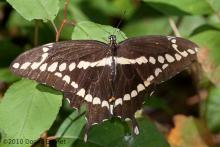
Species Types
Scientific Name
Papilio cresphontes
Description
The giant swallowtail is the largest butterfly in our state. In Florida, the caterpillars are a pest in citrus orchards, but here in Missouri, they feed primarily on prickly ash and hop tree, plants provided by nature.
Media
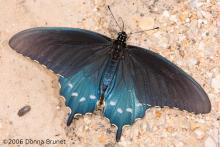
Species Types
Scientific Name
Battus philenor
Description
The pipevine swallowtail is ignored by most predators because of its acrid body juices. Several other butterflies benefit by looking strikingly similar.
Media

Species Types
Scientific Name
Eurytides marcellus
Description
Zebra swallowtails are unmistakable with their black and white stripes and long tails. Look for this species fluttering around in Missouri’s forests.
Media

Species Types
Scientific Name
Colias philodice
Description
The clouded sulphur is one of our most common butterflies, flying low over fields and lawns, from late March into December.
Media

Species Types
Scientific Name
Phoebis sennae
Description
The cloudless sulphur is the large, clear-yellow butterfly you see flying rapidly to the southward in late summer and fall: They’re migrating!
Media

Species Types
Scientific Name
Colias eurytheme
Description
One of the most common butterflies in Missouri, the orange sulphur often gathers in numbers in moist places.
Media
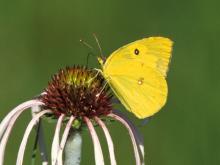
Species Types
Scientific Name
Zerene cesonia (formerly Colias cesonia)
Description
The southern dogface has a dog’s head pictured on its yellow forewings. It repopulates our state each year from the south.
Media
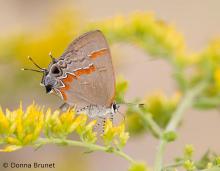
Species Types
Scientific Name
Calycopis cecrops
Description
The red-banded hairstreak has a unique pattern of white, black, and red-orange bands on the underside hindwing. It is most common in the Ozarks.
Media
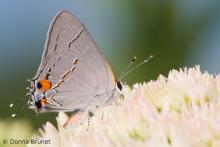
Species Types
Scientific Name
Strymon melinus
Description
The gray hairstreak, a small gray butterfly, is widespread throughout the United States. In Missouri, there are three or more broods each year.
Media

Species Types
Scientific Name
Junonia coenia
Description
The common buckeye is one of Missouri’s prettiest butterflies, but it doesn’t overwinter here. Instead, migrants arrive in late spring and early summer.
See Also


Media

Species Types
Scientific Name
About 1,500 species in North America north of Mexico
Description
Adult caddisflies are mothlike. Their larvae are aquatic and build portable, protective cases out of local materials, including grains of sand, bits of leaves and twigs, and other debris.
Media

Species Types
Scientific Name
Corydalus cornutus
Description
Adult eastern dobsonflies are huge and mothlike, with large wings and a weak, fluttery flight. The fiercely predaceous aquatic larvae, called hellgrammites, are well-known to anglers, who often use them as bait.
About Butterflies and Moths in Missouri
Butterflies, skippers, and moths belong to an insect order called the Lepidoptera — the "scale-winged" insects. These living jewels have tiny, overlapping scales that cover their wings like shingles. The scales, whether muted or colorful, seem dusty if they rub off on your fingers. Many butterflies and moths are associated with particular types of food plants, which their caterpillars must eat in order to survive.





















